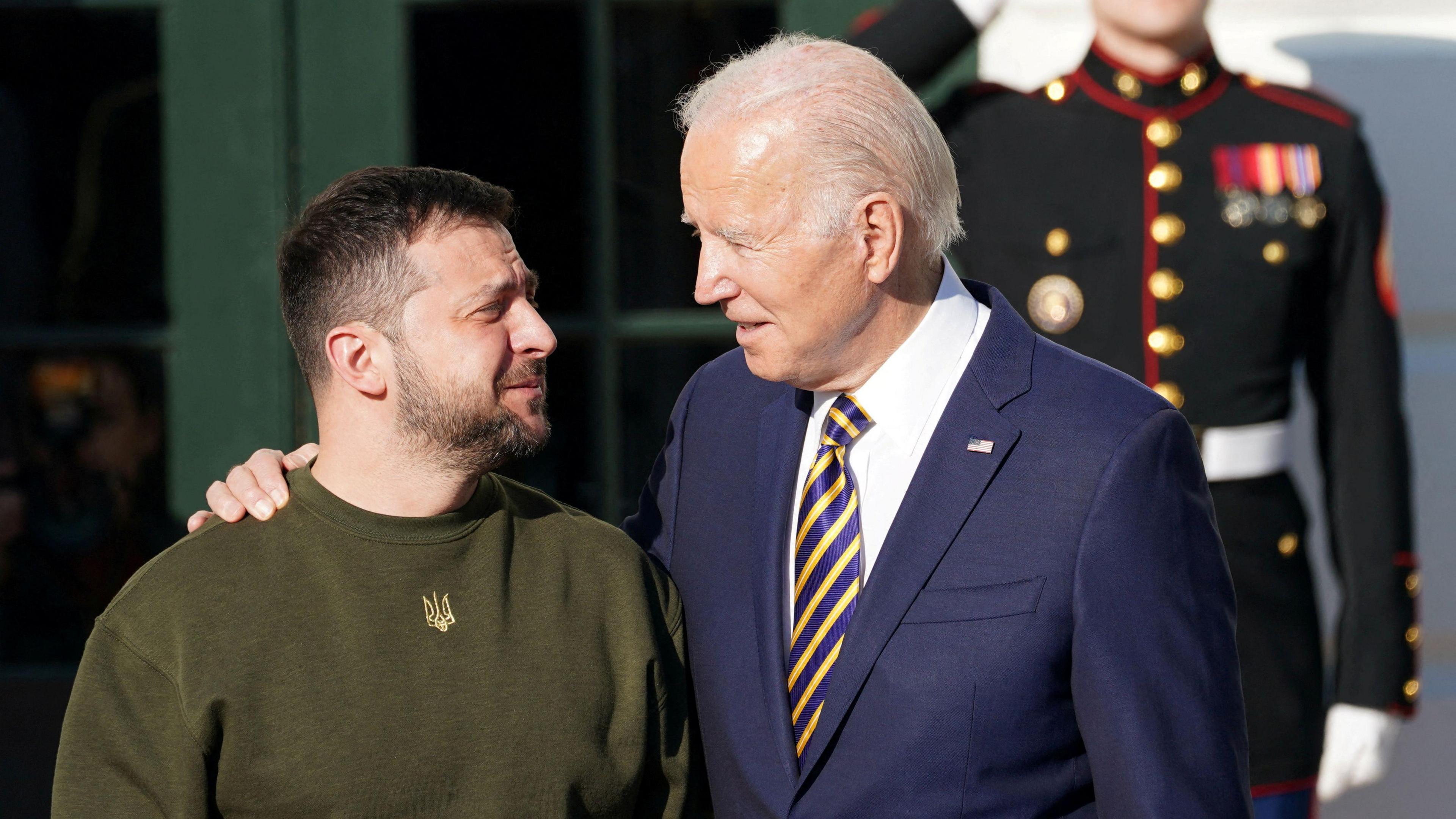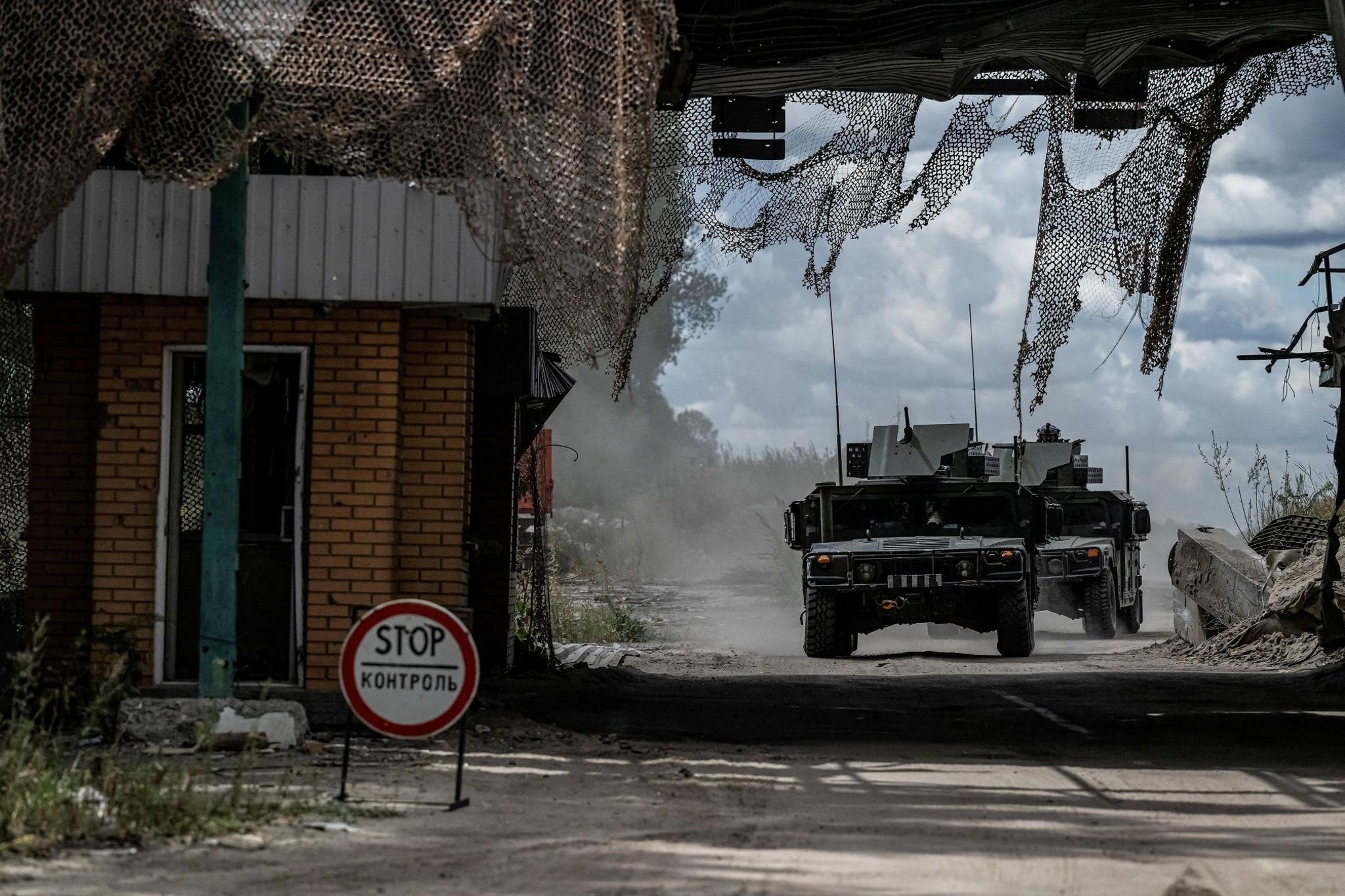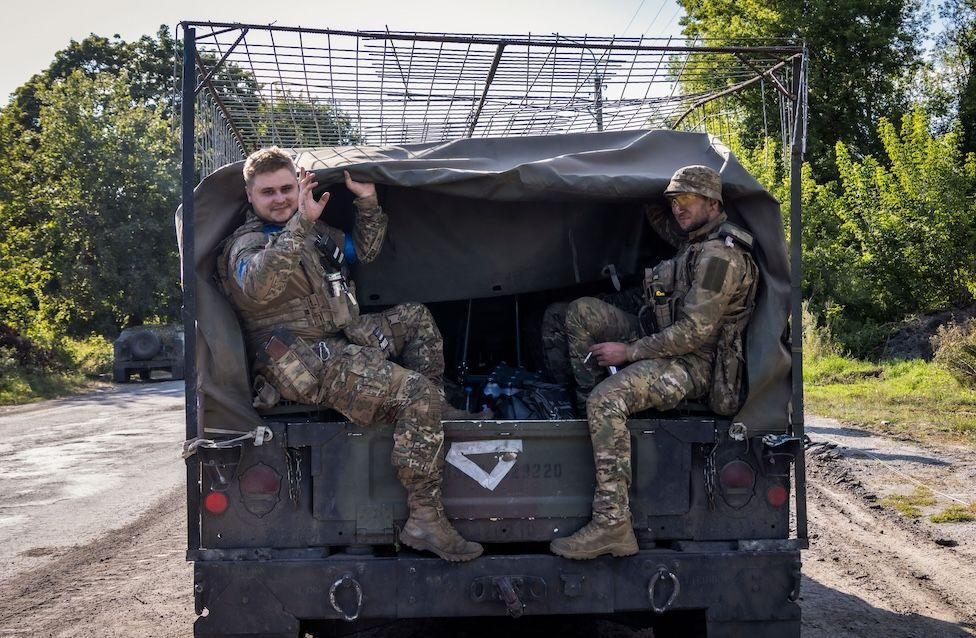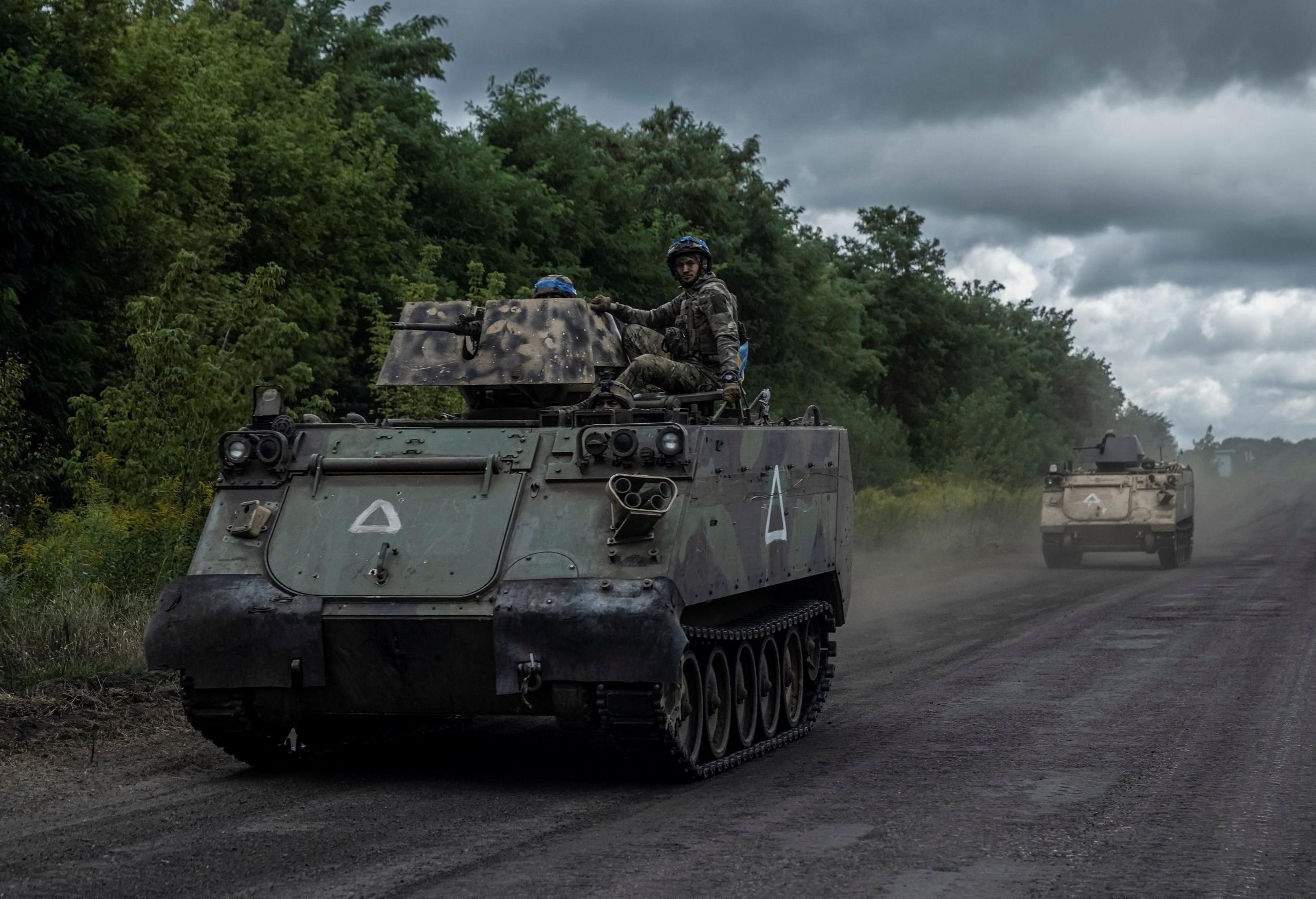Ukraine's surprise advance into Russia a dilemma for Biden

President Zelensky has depended on his American ally
- Published
Washington is absorbing the impact of Ukraine’s lightning assault into Russia’s Kursk region as the scale of President Zelensky’s bold gamble emerges.
US officials are assessing how the incursion might reshape the political and military dynamics of the war, as well as the implications for Washington’s long-shifting stance on how Ukraine can use American-supplied arms.
The stunning raid, catching both Russian and apparently Western leaders by surprise, highlights one of the riskiest dilemmas for the Western-backed defence of Ukraine: President Biden has consistently tried to empower Kyiv to push back Russia’s invasion without risking an American escalation with Moscow.
As President Putin has always tried to portray the conflict as a war between Russia and the West, Mr Biden has sought to put clear limits on US policy to deflate that narrative and prevent a conflagration.
But Ukraine’s Kursk assault - the largest incursion into Russia by a foreign military since World War Two, according to military analysts - has raised a series of urgent questions for the White House.
Does it rapidly expand the boundaries of Washington’s set limits for how Ukraine can use American and Nato weapons systems?
Does it risk crossing Russia’s red lines over Western involvement in the war? If not, has President Zelensky showed Washington he can call Mr Putin’s bluff?

Ukrainian forces drive US-made Humvee vehicles at a border crossing between Ukraine and Russia
Despite the risks and the uncertainty, there is a sense of surprised admiration among some in Washington at Mr Zelensky's move. Piecing together comments from US officials over the last week reveals something of the emerging position.
The administration insists Ukraine gave it no advance warning of the assault. White House spokeswoman Karine Jean-Pierre has said Washington had "nothing to do" with it.
As for the use of US weapons, the White House, Pentagon and State Department won't officially confirm whether they are being used, but it seems overwhelmingly clear that they are, given Ukraine’s reliance on US and Nato weapons systems.
Vladislav Seleznyov, a former spokesman for the Ukrainian armed forces' general staff, told Voice of America that US-provided HIMAR rocket launchers had been critical to the advance.
US approval for the use of its weapons by Ukraine in the Kursk incursion is certainly being implicitly given. Pentagon spokesman Patrick Ryder said this week: "We assess that they're within the policy boundaries that we've set. Those policies haven't changed as it relates to in particular to use of US weapons."
Officials say the assault is "consistent" with their policy "from the very beginning" for Ukraine to be able to defend itself against attacks coming across the border.
But Pentagon spokeswoman Sabrina Singh added: "Again, we don't support long range attacks into Russia. These are more for crossfire. I'm not going to put a specific range on it."

Ukraine’s Kursk assault is the largest incursion into Russia by a foreign military since World War Two
The US is the single biggest arms supplier to Ukraine - making the relationship the most consequential for Ukraine’s prospects. Just last week the Pentagon authorised its 63rd tranche of equipment in three years, including Stinger missiles and artillery shells.
But since the start of the Russian invasion President Biden's approach has been characterised by at first a refusal to send more even advanced weapons - including, consecutively, HIMARS rockets, Patriot missile defence systems and F-16 fighter jets - before later changing his mind.
The same goes for White House policy on Ukrainian attacks into Russian territory. For many months President Zelensky pleaded for permission to strike at military targets in Russia that facilitated attacks into Ukraine.
In May, Mr Biden finally authorised the use of US weapons to strike across the border into Russia but only in a limited range from the Kharkiv region - which was under Russian assault. The White House described Ukraine’s permitted actions as "counter-strike" measures.
"They're authorised to be used in proximity to the border when [Russian military sites] are being used on the other side of the border to attack specific targets in Ukraine," said Mr Biden in June. "We're not authorising strikes 200 miles into Russia and we're not authorising strikes on Moscow, on the Kremlin."
A few weeks later, that same permission was extended to any point along the border where Russian forces were preparing to attack Ukraine.
Since then, Mr Zelensky, along with some European allies and some Democrats in Washington, have urged the US to further "untie" Ukraine’s hands.
Specifically, the Ukrainian leader wants to be able to use American-provided ATACMS or long range missiles to fire deep into Russia to take out drone or missile launch sites. Washington has refused.
Hovering ominously over all of such decisions are the warnings of President Putin, who has previously threatened to use "all available means" if Russia’s territorial integrity is threatened. This in addition to his nuclear sabre rattling if he deems the West as posing an intolerable threat to Russia via the Ukraine war.
Ultimately, President Biden's stance could be summed up as this: Ukraine can decide how best to defend itself using American weapons, including strikes across the border, but within very clear limits - including not using long-range missiles.
The words he used in June suggested that Ukraine’s limits were "in proximity to the border".

Ukrainian forces drive US-designed M113 armoured personnel carriers near Russian border
Ukraine sets up military office inside Russia
- Published15 August 2024
UK-donated tanks used in Kyiv's Russia incursion
- Published15 August 2024
Rosenberg: Ukraine's advance undermines Putin's image as 'Mr Security'
- Published14 August 2024
The Kursk offensive takes America’s dilemma into unexpected territory - literally and figuratively. Ukraine’s incursion is a cross-border ground assault, reportedly involving anywhere between 5,000 to 12,000 troops.
Some unconfirmed Russian reports have suggested its forces could have advanced up to 30km into Russia.
By the middle of this week Kyiv said its forces were in control of 1,000 sq km of Russian territory, including more than 70 villages and towns, and had captured hundreds of prisoners of war. Russian officials said around 132,000 people had been evacuated from their homes.
With US officials still reluctant to talk about it publicly in any detail, my sense is that they are still working out what it means for the state of the battlefield, the future of the war and how this is affecting Putin’s calculations.
If Mr Zelensky was frustrated at what he perceived as too much caution or slow decision making from President Biden over arms authorisations, he may be trying to show him he can force both his - and Vladimir Putin's - hand. It is a daring gamble.